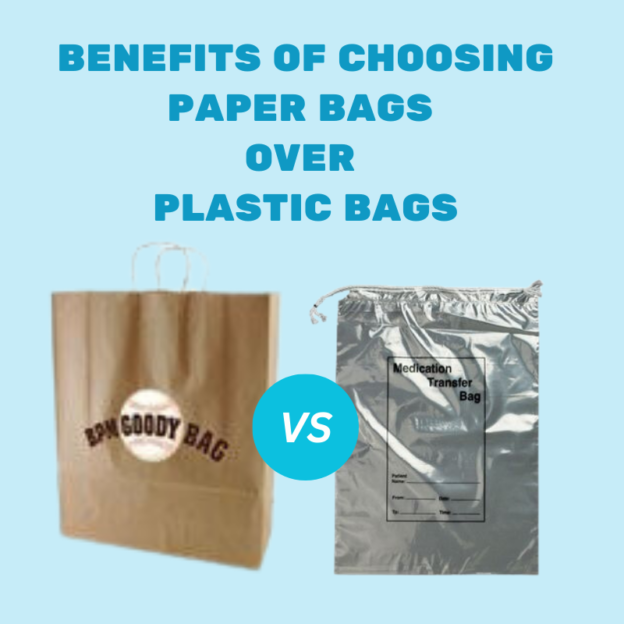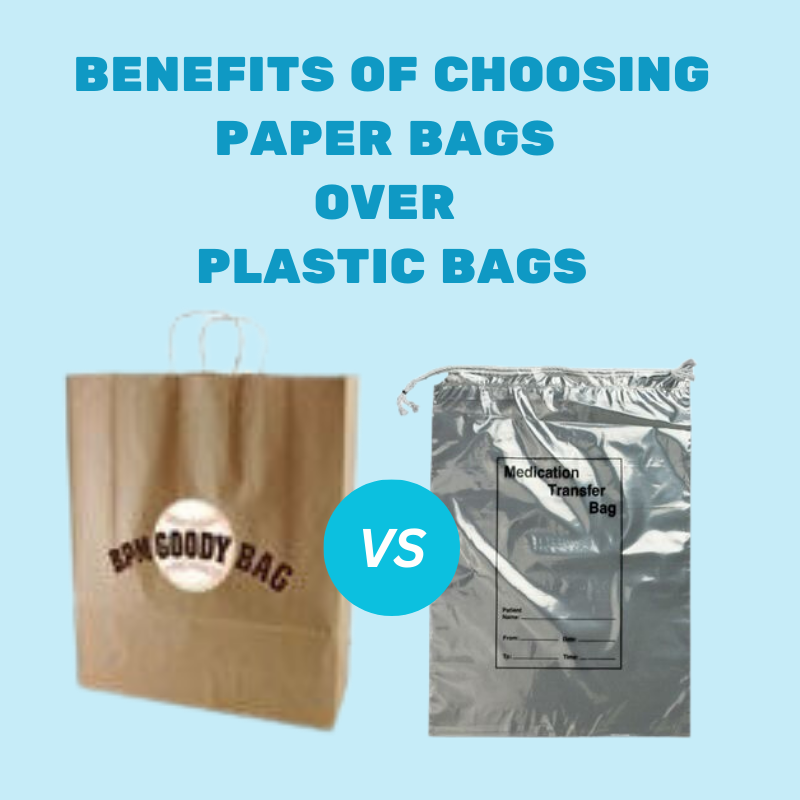

Benefits of Paper bags
Paper bags are a better option than plastic bags since they have more positive environmental effects. First and foremost, their biodegradability is a big plus. Compared to plastic bags, which can linger in the environment for hundreds of years, paper bags naturally degrade over time, posing less long-term environmental hazards. Paper bags are produced from trees, which is a renewable resource, making them a more environmentally friendly choice than plastic bags, which come from fossil fuels.
Paper bags’ eco-friendliness also stems from the fact that they can be recycled. They are simple to recycle, and recycled paper can be used to create new bags or other paper goods, reducing the need for raw materials and conserving resources. Regarding the impact on wildlife, paper bags are a better option because they do not carry the same hazards of entanglement and ingestion as plastic bags and are less likely to hurt wildlife if they end up in the environment.
Paper bag manufacture often has a smaller carbon impact than plastic bag production. When one considers the energy-intensive process involved in producing plastic, this lessened environmental impact becomes very clear. Consumers and organizations may reduce their carbon footprint and actively support more ecologically friendly and sustainable packaging options by choosing paper bags.
Detrimental Effects of Using Plastic Bags
Plastic bags exert numerous detrimental effects on the environment. One of the most alarming aspects is their remarkable longevity, as they persist in the environment for hundreds of years. This prolonged existence results in widespread litter and clutter, tarnishing ecosystems, streets, and waterways. Moreover, plastic bags represent a substantial threat to marine environments as they significantly contribute to marine pollution. They drift into oceans and rivers, imperiling marine life, with marine animals frequently ingesting or becoming ensnared in these bags, often resulting in injury or fatality.
Microplastics, which are formed when plastic bags break down into smaller pieces, pose a hidden threat. These tiny plastic particles enter the food chain and may endanger both aquatic and terrestrial life, including people who eat polluted seafood. Furthermore, by utilizing non-renewable fossil fuels and contributing to resource depletion, the manufacture of plastic bags aggravates already existing environmental problems. Plastic bag production requires a lot of energy, and the greenhouse gas emissions it produces contribute to global warming.
Plastic bags are a common source of litter in both urban and rural areas and have a severe influence on aesthetics, depreciating landscapes, and harming tourist and local economy. Plastic pollution has consequences that go beyond the surface since it has the power to upset ecosystems by changing the natural habitats of diverse species, which in turn affects their behavior and general well-being.
Despite the potential for recycling, recycling plastic bags encounters significant challenges. Inadequate recycling infrastructure and consumer behaviors often result in many plastic bags ending up in landfills or as litter, thereby exacerbating the environmental problems associated with their use. In summary, the consequences of plastic bag usage extend far and wide, encompassing issues of pollution, harm to marine life, resource depletion, aesthetic degradation, ecosystem disruption, and challenges in recycling. These issues underscore the urgent necessity for more sustainable alternatives like paper bags to mitigate the environmental impact of plastic bags.
How We Can Contribute to Nature by Using Paper Bags –
Paper bags provide various benefits for the environment. Because they are made of natural fibers, primarily obtained from trees, they are biodegradable. Paper bags naturally disintegrate over time after being thrown in landfills or the environment, returning to the soil as organic matter. This biodegradability stands in stark contrast to plastic bags, which can remain for centuries and harm the ecosystem permanently. These paper bags are frequently made utilizing sustainable forestry techniques and come from a renewable resource—trees. In order to preserve and maintain the health of forests, these techniques entail planting more trees than are harvested. Contrarily, plastic bags contribute to the depletion of resources because they are made from non-renewable fossil fuels.
Paper bags are easily processed by recycling facilities to make new bags or other paper products, and they are highly recyclable. Because of this recycling potential, less virgin material is required, saving valuable resources. Despite being recyclable in theory, plastic bags frequently wind up in landfills or as litter because of a lack of suitable recycling infrastructure. Comparatively to plastic bags, paper bags have less of an effect on wildlife when they are released into the environment. Paper bags are typically safer for wildlife than plastic bags, which present major risks of entanglement and ingestion. Compared to the production of plastic bags, paper bag production typically produces less greenhouse gas emissions. This decreased carbon footprint aids in preventing climate change and reducing the negative effects on the environment associated with the energy-intensive manufacture of plastic bags.


 Why Choose Custom Printed Paper Bags
Why Choose Custom Printed Paper Bags  Benefits of Branded Custom Plastic Bags
Benefits of Branded Custom Plastic Bags  Are Paper Bags More Sanitary Than Plastic?
Are Paper Bags More Sanitary Than Plastic? 
Comments